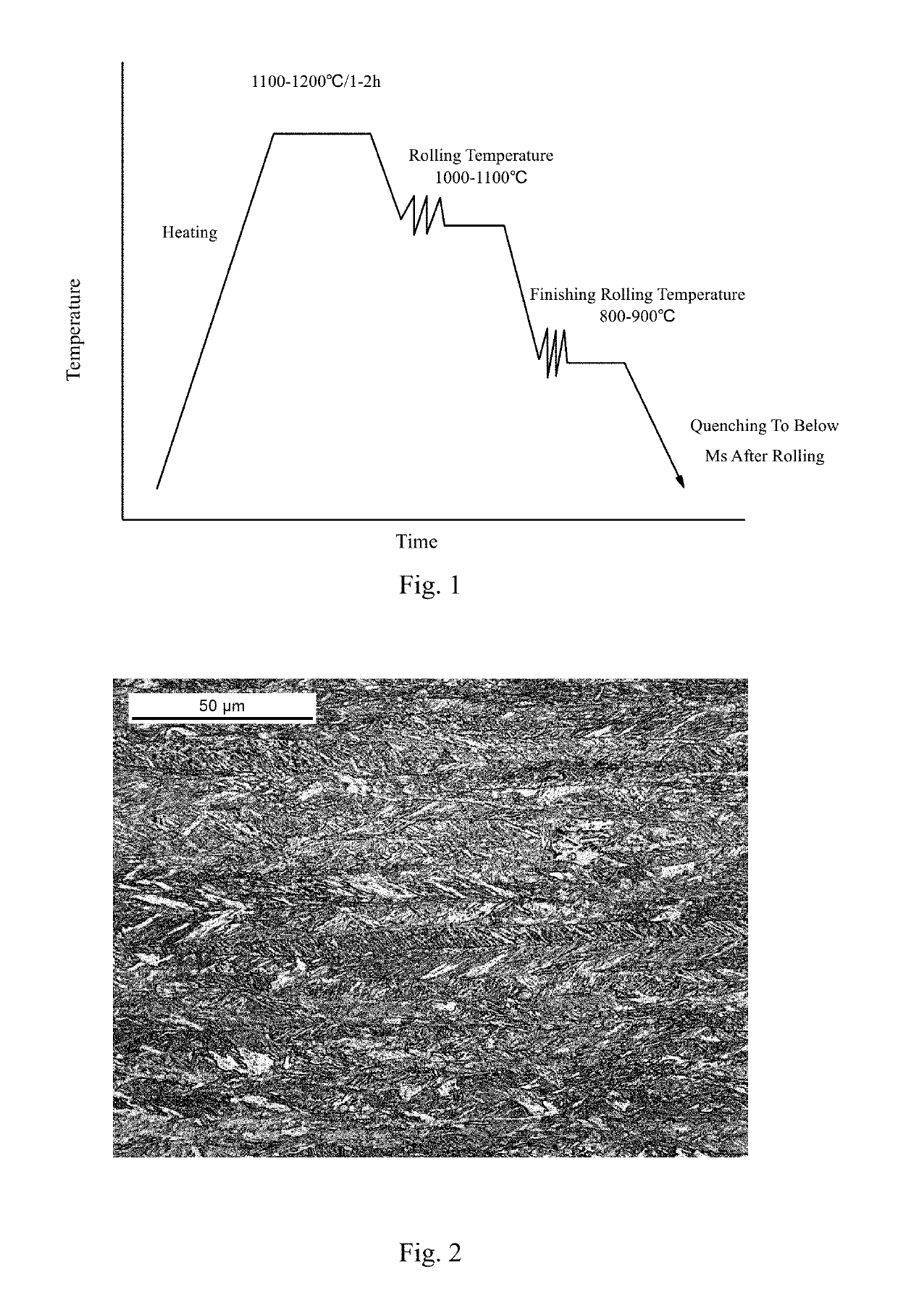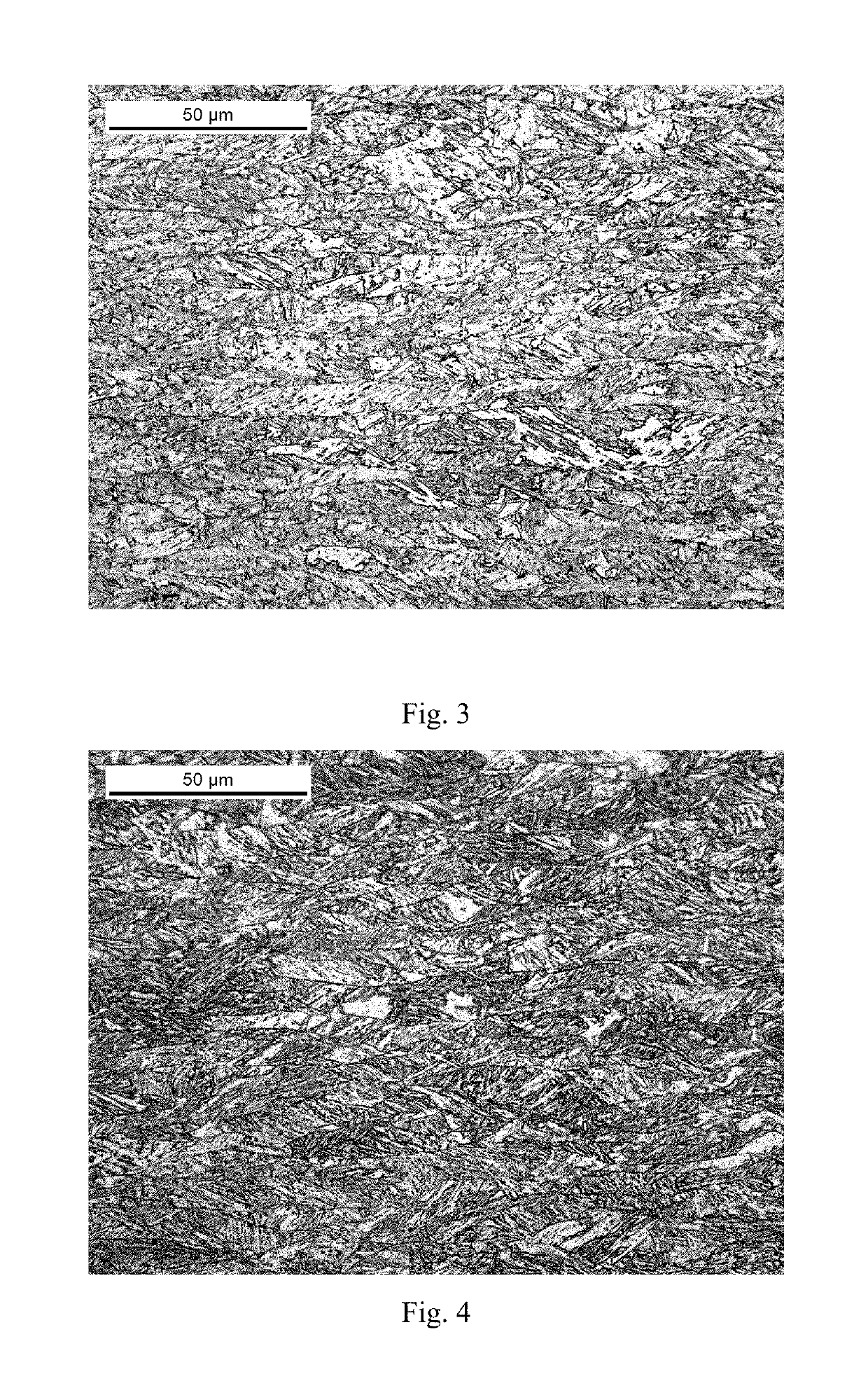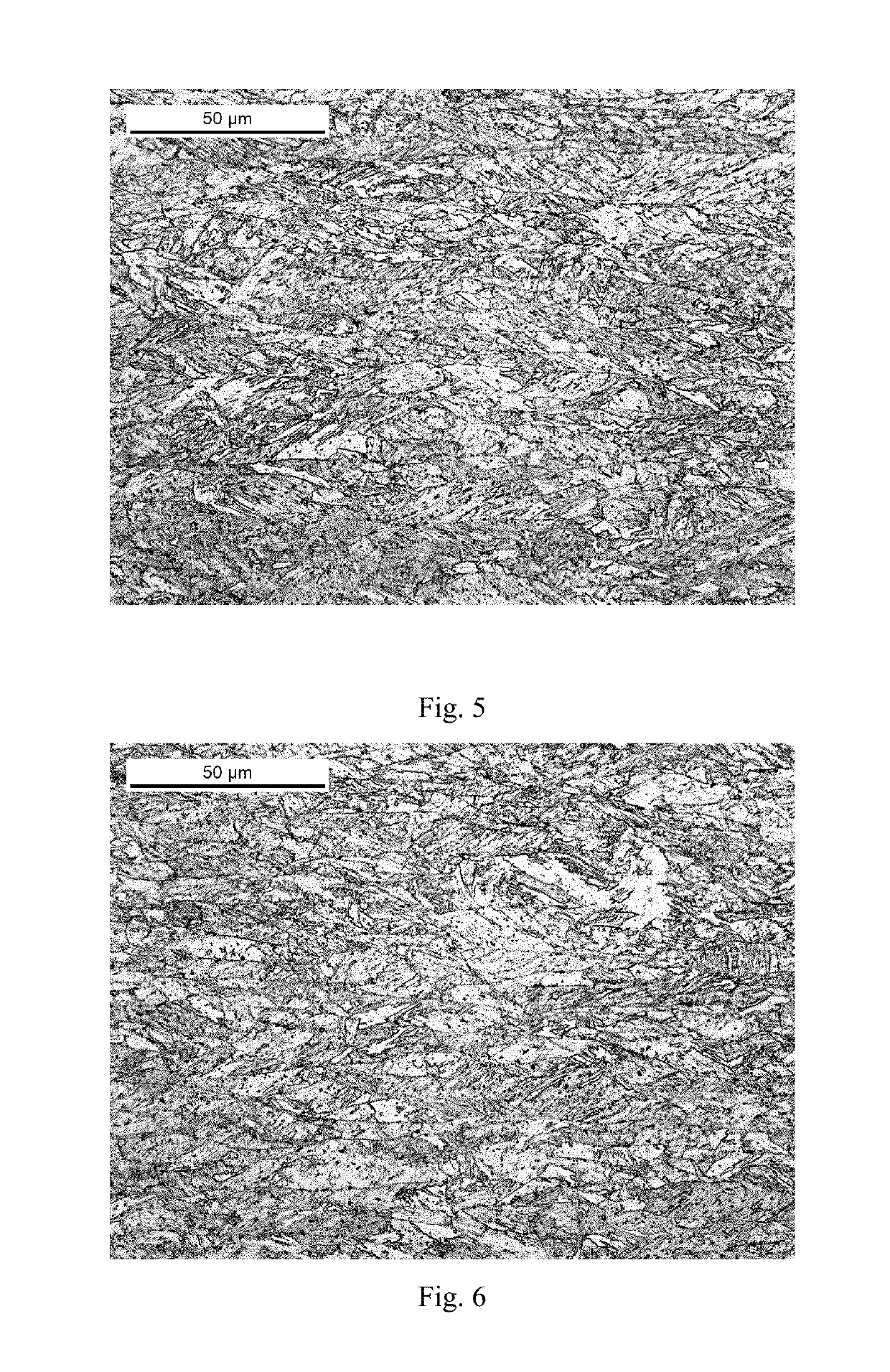High-toughness hot-rolling high-strength steel with yield strength of 800 MPa, and preparation method thereof
a high-strength steel, high-toughness technology, applied in the field of high-strength hot-rolled high-strength steel with a yield strength of grade 800 mpa and a preparation method thereof, can solve the problems of increasing the difficulty of high-strength steel to ensure low-temperature impact toughness, not only fails to meet the strength requirement, and high-strength steel with a yield strength of 800 mpa or higher,
- Summary
- Abstract
- Description
- Claims
- Application Information
AI Technical Summary
Benefits of technology
Problems solved by technology
Method used
Image
Examples
Embodiment Construction
[0052]The disclosure will be further illustrated with reference to the following Examples and accompanying drawings.
[0053]The steel compositions of the Examples according to the disclosure are listed in Table 1. Table 2 shows the process for manufacturing the steel of the Examples according to the disclosure. Table 3 shows the mechanical properties of the steel of the Examples according to the disclosure.
[0054]The process flow of the Examples according to the disclosure: smelting in a converter or electrical furnace→secondary refining in a vacuum furnace→casting blank (ingot)→reheating the cast blank (ingot)→hot rolling+on-line quenching→steel coiling, wherein the temperature for heating the cast blank (ingot) was 1100-1200° C.; the hold time was 1-2 hours; the initial rolling temperature was 1000-1100° C.; multi-pass large reduction rolling was conducted at temperatures of 950° C. and higher, and the accumulated deformation rate was ≥50%; subsequently, the intermediate blank was he...
PUM
| Property | Measurement | Unit |
|---|---|---|
| impact energy | aaaaa | aaaaa |
| elongation | aaaaa | aaaaa |
| tensile strength | aaaaa | aaaaa |
Abstract
Description
Claims
Application Information
 Login to View More
Login to View More - R&D
- Intellectual Property
- Life Sciences
- Materials
- Tech Scout
- Unparalleled Data Quality
- Higher Quality Content
- 60% Fewer Hallucinations
Browse by: Latest US Patents, China's latest patents, Technical Efficacy Thesaurus, Application Domain, Technology Topic, Popular Technical Reports.
© 2025 PatSnap. All rights reserved.Legal|Privacy policy|Modern Slavery Act Transparency Statement|Sitemap|About US| Contact US: help@patsnap.com



